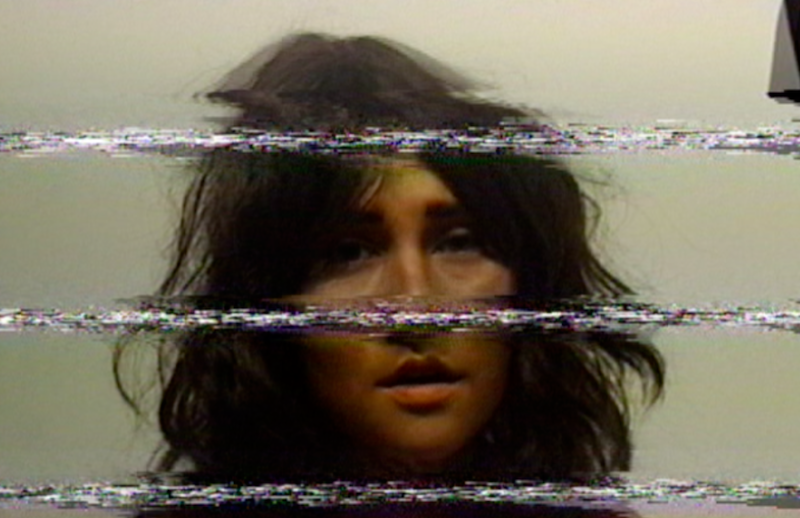
Nina Schwanse, Interview with Veronica Compton (Just You), 1986 (still), 2013; Hi8 transferred to digital video. Courtesy the artist.
A friend sent me an email. She had read my first Art21 Magazine piece, “On Becoming,” and knew I was struggling with what to write next. Her email began “You become. It takes a long time.” I didn’t recognize the words at first and for a split second I feared she was mocking me. She continued, “That’s why it doesn’t happen often to people who break easily, or have sharp edges, or who have to be carefully kept.” As I read on, I started to recall these lines from The Velveteen Rabbit, when the Skin Horse schools the Rabbit on becoming real. The words struck me because I was no longer trying to work through the aesthetics of becoming as I had in my first piece, but rather what I was imagining as its inverse—unbecoming, unraveling, dissolving, or suspending the self.
A few months ago my organization Pelican Bomb published an interview between New Orleans-based artist Nina Schwanse and curator Amy Mackie. Schwanse talked about her exhibition, Hold It Against Me: The Veronica Compton Archive, and how she develops her different characters. For Hold It Against Me, she had created a fictionalized body of art and ephemera as Veronica Compton, a real woman from Los Angeles whose infatuation with convicted serial killer Kenneth Bianchi, also known as the Hillside Strangler, had led her to attempt murder on his behalf in 1980. Schwanse described the mode of extended performance that had birthed this show and other projects as “taking on a persona.” In her words, it is a consuming, excruciating, and cathartic process.
Prompted by Mackie on the issue of authorship and vulnerability, Schwanse then arrived at something crucial to her practice: “I put so much of myself in my work, but it’s easier for me to think of it as not being Nina.” In devoting so much time and energy to becoming a character, Schwanse creates a rare privilege: she ceases to be herself. Who cannot recall a time when, if only for a moment, you wished you could be someone else, disappear, “crawl under a rock”? It’s a sensation deeply tied to humiliation—a theme at the core of Schwanse’s work. As Wayne Koestenbaum writes in his book Humiliation, “we all live on the edge of humiliation, in danger of being deported to that unkind country.”[1] For most, humiliation and its attendant desire to dissolve the self comes when we least expect it. It is spontaneous; something we simply can’t plan for. But for Schwanse, I would argue that, as an artist, the act of unbecoming is as intentional as the act of becoming. Schwanse finds a way to control a seemingly uncontrollable experience and suspends, however briefly, her very existence.
________
[1] Wayne Koestenbaum, Humiliation (New York, Picador: 2011), 18.



